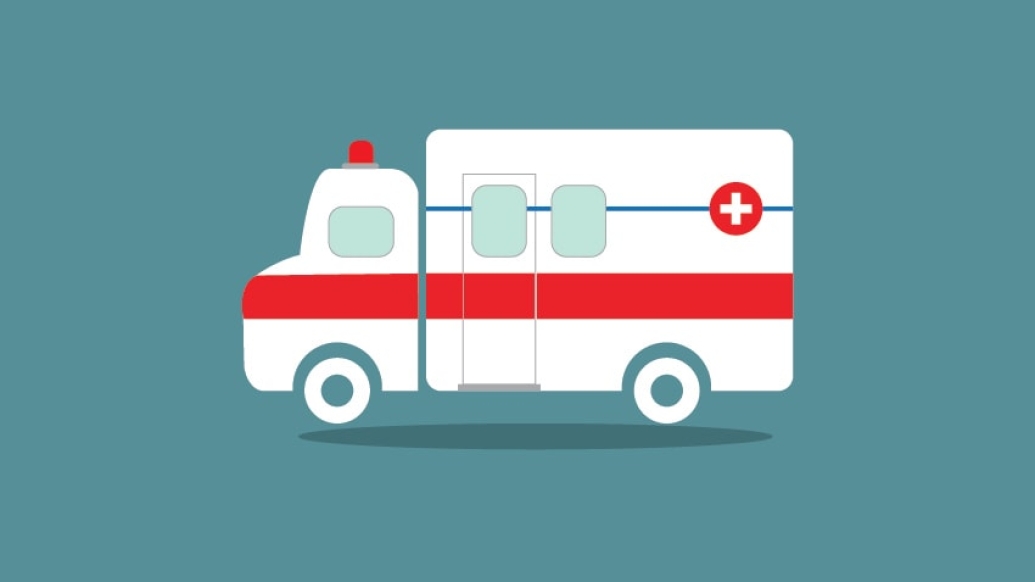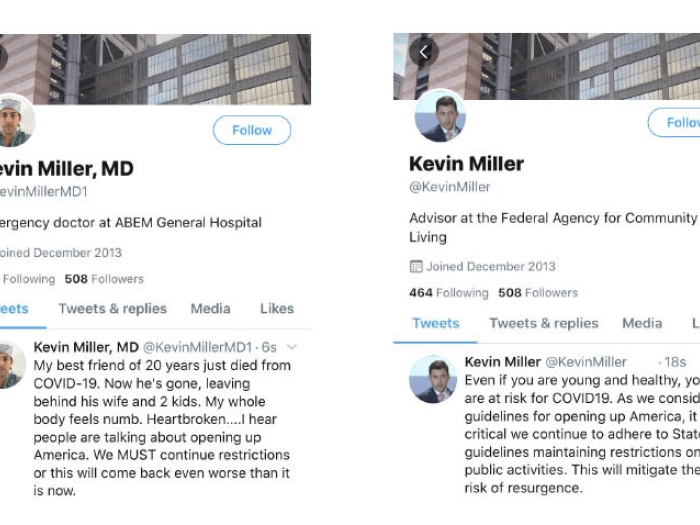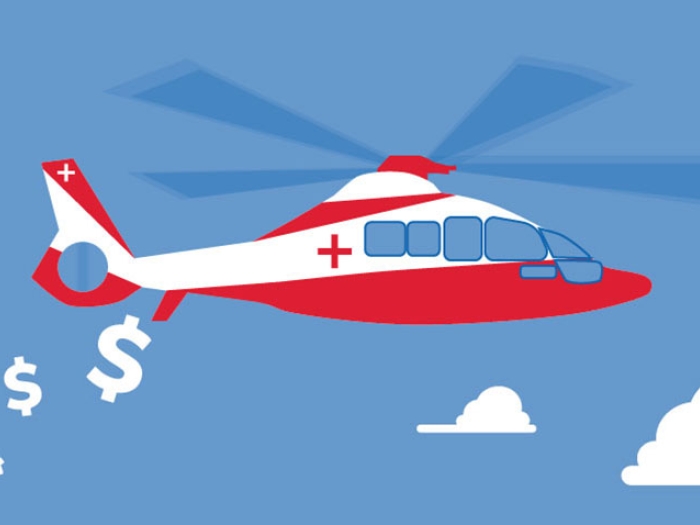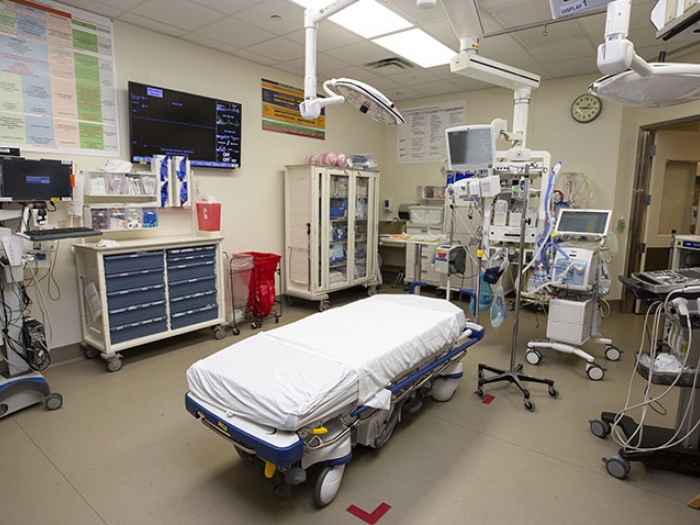After a 2015 national report detailed fragmentation among emergency medical services systems, Michigan Medicine researchers worked with stakeholders in Michigan to explore best practices in improving pre-hospital care.
4:00 PM
Author |

Emergency medical services are often the first to provide acute care to critically ill patients. These services can include private, government or publicly owned paramedic and ambulance services, as well as fire departments with EMS personnel.
MORE FROM THE LAB: Sign up for our weekly newsletter
But delivery of that care isn't always seamless. Nor are the quality levels universal.
The divide was the basis of a 2015 Institute of Medicine report that highlighted fragmentation among EMS systems in the United States and a lack of accountability and coordination at the state and federal levels.
The findings compelled Mahshid Abir, M.D., assistant professor of emergency medicine at Michigan Medicine and director of the University of Michigan Acute Care Research Unit, to evaluate the quality of EMS oversight in Michigan and explore how EMS systems could work together to improve patient care.
"This report identifies best practices in EMS oversight and informs related state policy in order to improve pre-hospital care quality," says Abir, who presented her findings at the 2017 Society for Academic Emergency Medicine annual meeting in Orlando, Florida.
In its own evaluation, the Institute of Medicine (now the National Academy of Medicine) continually cited knowledge gaps in best practices in quality measurement and data reporting for EMS oversight. It also provided recommendations to better understand what roles the federal government, state governments and local communities have in oversight and evaluation of EMS systems.
Abir and colleague Rekar Taymour, a research associate for the U-M Acute Care Research Unit, agreed with the recommendations. They sought to examine how those knowledge gaps could be filled regarding Michigan's 61 medical control authorities — organizations that oversee and coordinate EMS in designated areas — through funding from the Michigan Department of Health and Human Services.
Michigan HHS administered previous evaluation tools and held outcomes data within the Michigan EMS Information System (MI-EMSIS), a statewide repository of EMS data that contributes to a larger national repository.
The authors' efforts were guided by their long-standing objective.
"The U-M Acute Care Research Unit works to unify the delivery of acute care along its continuum, meaning pre-hospital care, emergency care, inpatient care and ambulatory care all play a role," says Abir, also a member of the Michigan Center for Integrative Research in Critical Care and the U-M Institute for Healthcare Policy and Innovation.
Gathering and analyzing data
The study involved three phases. In the first, researchers analyzed peer-reviewed and lay literature to evaluate the landscape and quality measures of EMS oversight.
Phase two included a quantitative analysis of the MI-EMSIS to evaluate the degree to which reported data were missing.
SEE ALSO: The More Doctors Interact, the Better Their Patients Do
"MI-EMSIS is meant as a quality-assessment tool for pre-hospital care," Abir says. "However, it can only be used for this purpose if the reported data is complete and valid."
Data evaluated included patient demographics, medication allergies, EMS provider impression and vital signs, among other variables.
Finally, they performed focus groups and interviews with EMS stakeholders from diverse community settings, geographic regions and professional roles to understand factors associated with successful EMS oversight.
The takeaway: Most quality measurement occurs at the EMS personnel level instead of the oversight and system levels, confirming the knowledge gap identified by the Institute of Medicine report.
Unifying care across the acute care continuum … through improved communication and collaboration is likely to lead to improved care quality and patient outcomes.Mahshid Abir, M.D.
Results and recommendations
Findings from Abir's study shed light on key factors to developing quality measures for EMS oversight.
The team found that the data being reported in MI-EMSIS were not always of high quality, and missing variables often differed based on software platform, EMS agency and the overseeing medical control authority. Stakeholders, the researchers note, attributed the missing data partly to data-mapping issues, uncertainty in how each authority defined some of the variables and unfamiliarity with reporting procedures.
"We took the data from the three phases of the study and triangulated it," Abir says. "We found that high-quality EMS oversight occurs through seven key factors."
The seven areas of note:
-
Competition and collaboration
-
Leadership
-
Organizational structure
-
Quality improvement culture and practice
-
Relationships and communication
-
Resources
-
Community-specific factors
Those pillars have valuable implications.
"We noted that medical control authorities have to be deliberate and have structures and processes in place in each of these seven areas," Abir says. "If they do, we think it could greatly improve the quality and coordination of care EMS systems provide to patients."
Based on the study findings, the team provided 20 recommendations to Michigan HHS to inform policy related to EMS oversight in the state.
Among them: promoting EMS protocol consistency across the state; encouraging medical control authority boards to include representation from all key stakeholders; developing and disseminating a medical control authority guidebook of best practices to EMS agencies; exploring methods of providing consistent funding to medical control authorities through hospitals, EMS agencies, foundations and private industry; and promoting regional medical control authority conferences for leaders to coordinate and collaborate.
"Unifying care across the acute care continuum — including from the pre-hospital to emergency department and hospital settings — through improved communication and collaboration is likely to lead to improved care quality and patient outcomes," Abir says.
Looking forward
Through informing state policy regarding EMS oversight, Abir hopes the study and recommendations can help improve pre-hospital care quality and unify EMS services and other key stakeholders, and perhaps become an example for other states of how these services can work together more effectively through high-quality EMS oversight.
"Medical control authorities can serve as a common point where stakeholders across the state, including hospitals, EMS agencies and police and fire departments can come together and improve pre-hospital care and patient outcomes," Abir says. "Collaboration is key."

Explore a variety of healthcare news & stories by visiting the Health Lab home page for more articles.

Department of Communication at Michigan Medicine
Want top health & research news weekly? Sign up for Health Lab’s newsletters today!





